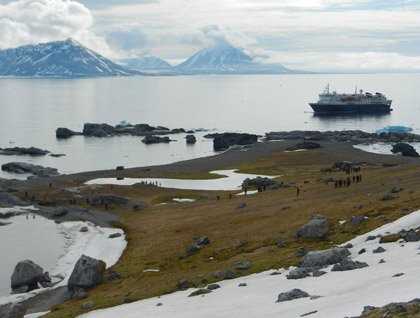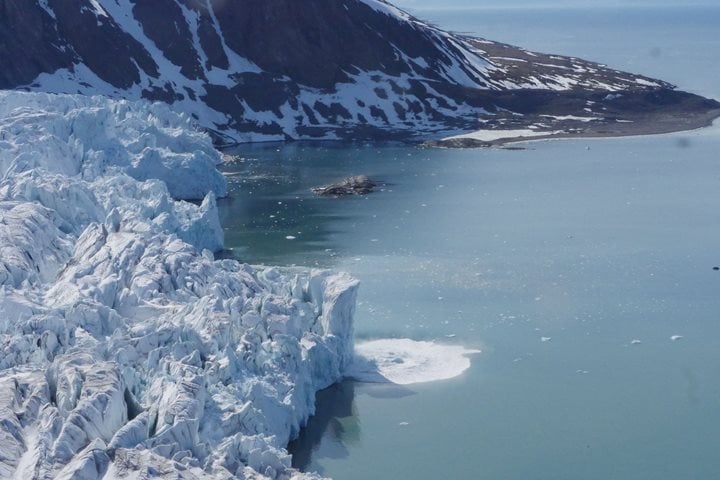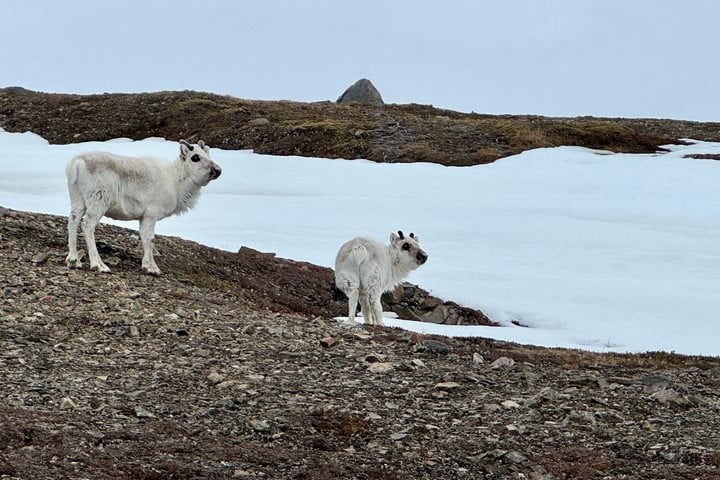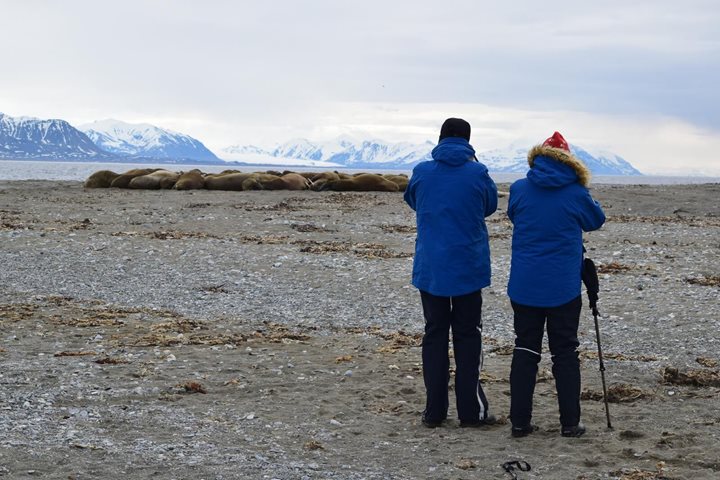We came from many corners of the globe – America, Australia, Mexico and Europe – to reach this remote Arctic land in the frozen north. Some had come to Oslo several days earlier to acclimatize. Others had been on a four-day exploration of rugged Norway, from Bergen via a ferry up the fjords to a 3,000-feet high railway adventure along deep tunnels through mountains and over the snow-covered Hardangervidda to Oslo. We all joined the charter flight from Oslo to touch down in Longyearbyen yesterday afternoon. By 6 in the evening, our ship was steaming out of Isfjord in bright sunlight, before turning south and down the west coast of Spitsbergen.
Despite the chance to lie in today, most folks were too excited to stay in their bunks and emerged blinking into the bright light of a perfect Svalbard morning. The ship navigated deep into Hornsund, passing the curved spike of Hornsundtind, the highest mountain in southern Spitsbergen at over 4,700 feet. We cruised up to several glaciers, pushed into fast ice where numerous ringed seals were sprawled out on the ice. We watched scores of guillemots, little auks and eiders feeding in the mirror calm waters. Our lazy morning allowed time for the AECO briefing in the lounge where we learned how our behavior could help conserve the unique landscape, wildlife and historical relics of the area. This was followed by a kayak briefing and a decontamination exercise to hoover up any foreign seeds from our outdoor clothing from home. We also enjoyed a talk by the photo team to help us get the best results from our cameras here in the challenging, endless daylight north of the Arctic Circle.
Immediately after lunch we went ashore at the spectacular site of Gnålodden, where a 2,000-feet vertical rock monolith rises straight out of the sea. At its foot is a rock talus covered in the first spring flowers of purple saxifrage. Beside a crescent lake was a tiny wooden hut, a Norwegian trapper’s cabin used for 50 years from the 1920s to 1971. The last occupant was Ivar Ruud, a hunter who wrote an account of his time there in “The Year-Long Day.”
Traversing the steep slope, we noted the scat diversity: goose, arctic fox, and polar Bear. The rain of guano from the squabbling seabird colony makes these slopes richly fertile. A lovely mix of grass and flowers in late summer attracted grazing geese and reindeer and the inevitable predators. Some of our lucky guests saw a blue fox, the dark variety of the Arctic fox. Wildlife continues to thrive here thanks to sustained protection by the Norwegian government and by an international ban on hunting polar bears in 1973. Both barnacle and pink-footed geese were present during our walk. Above the clamor of the kittiwakes, we could hear the song of the snow bunting, the only songbird brave enough to venture this far north. We passed the remains of a Russian house and a single wooden grave from the Pomors, Russian hunters who came here in the 1700s.
All too soon it was time to return to the comfort of the ship, the captain’s welcome cocktail party, and a splendid supper. We will sleep well after an unforgettable first landing at a hauntingly beautiful site.







